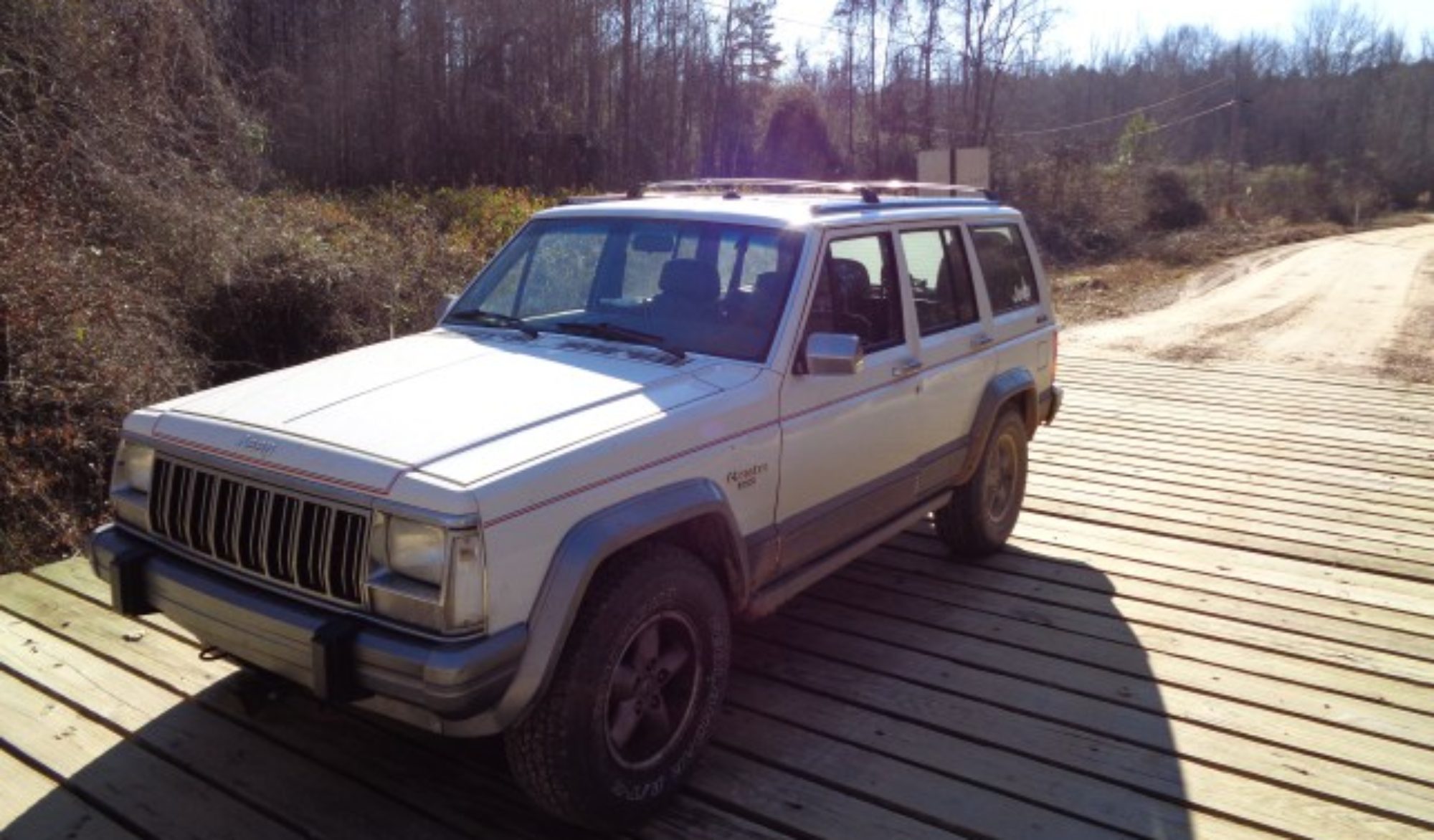Jeep Tire Rotation
and some tips on handling lugs nuts.
Rotating the tires on a Jeep is essential to long tread life. And with the cost of off road tires, you want them to last as long as possible. You can usually see a different wear pattern develop on the outer edges of the tires due the differences in the forces acting on the front and rear tires. Ideally the rotation would occur before the pattern is visible, but I usually wait until I can see it.
There are several schools of thought on rotating tires. Rotating tires means moving the tires to a different position on the Jeep. For example, you may simply swap the front tires to the rear. This inline pattern is how I most often rotate the tires. Some people add a side to side swap at the same time so that the tires are not only on the opposite axle but also on the opposite side of the Jeep. A swap in the X pattern means the tires will now be spinning in the opposite direction on the road.
Most of my tire experience has been with sports car tires and many of them have directional tires. So, I have gotten in the habit of simply moving the front tires to the rear and keeping them on the same side when I do a tire rotation. Either way you choose, here are some ways to accomplish the task:
How you rotate the tires depends on the equipment you have to work with. Since I have a lift and air tools, I lift the Jeep remove the lugs with an air wrench and move them to the new positions. I sometimes make a trip across my balancer if I have been having any vibration issues.
If you are armed only with the Jeep jack and the stock lug wrench, you are in for a bit of extra work. First, loosen the lugs on the side you plan to swap first. Remove the spare from its mount and have it ready. Jack up one corner and remove the wheel. Replace it with the spare but only put on three lugs. Set it down and move to the other axle. Break the lugs loose and then jack up that corner. Install the first tire there and install all the lugs. Now return to the corner with the spare and replace it with the tire from the other axle. Install the lugs and lower the Jeep. Repeat the procedure on the other side. Be sure to properly tighten all the lugs nuts when you are done.
If you have a jack stand, you can use it instead of the spare tire to save some effort. If you have two jacks you can save even more time and energy.
When loosening the lugs, note that they can be very tight. I prefer to use an air impact wrench for loosening. If you use a ¾ inch socket on the factory lug nuts, be sure it fits properly and is a deep well socket. Using a shallow socket will damage the chrome cover on the lug nut and make it so that no socket will fit it properly. If the cover is damaged, replace the lug nut. If you are faced with trying to remove a lug that is missing the chrome cover, get a cover from another lug nut and slip it inside you socket. This will allow a ¾ socket to fit the damaged lug.
If you do not have compressed air, I have found the electric impact wrenches work very well also. Even some of the battery powered units have plenty of torque and battery life for a tire rotation. Avoid the cheap guns that attach to the car battery. They are useless for tire rotation.
If you do not have an impact wrench, a long handled ratchet or breaker bar with a ¾ inch deep well socket works well. Be prepared to stand on the wrench handle if they were last put on at a tire shop. I don’t like to use a 4 way wrench because most of them are not deep enough to engage the lug nut properly.

Also, while the wheel is off inspect the lug studs threads. If there are damaged either chase the threads with a die or replace the stud. If the lugs are damaged in any way replace them. I prefer to run 13/16 hex lugs on my Jeeps instead of the stock size. However, I have to always remember that the stock lug wrench will no longer fit when I travel.
When tightening the lugs nuts, I always use a torque wrench. I prefer to use the clicker type for lug nuts for two reasons. First, the beam type wrenches are too hard to read sideways. Second, I would rather have precision than accuracy in lugs nuts. In other words, I don’t care if they are 73 or 76 I just want them all the same. BTW, I set the wrench at 75 ft lbs for the lug nuts.
I use a torque wrench because not only have I had the misfortune to have a wheel come loose while driving, I have seen wheel hubs damaged by too much torque. Also, a respected mechanic friend of mine, Jim Alton says that improper torque can cause brake shudder on Jeeps.
Rotating the tires at each oil change will help keep up with the uneven wear. Also, while the front wheels are off, it is easier to lubricate ht various grease fittings in the front suspension.



